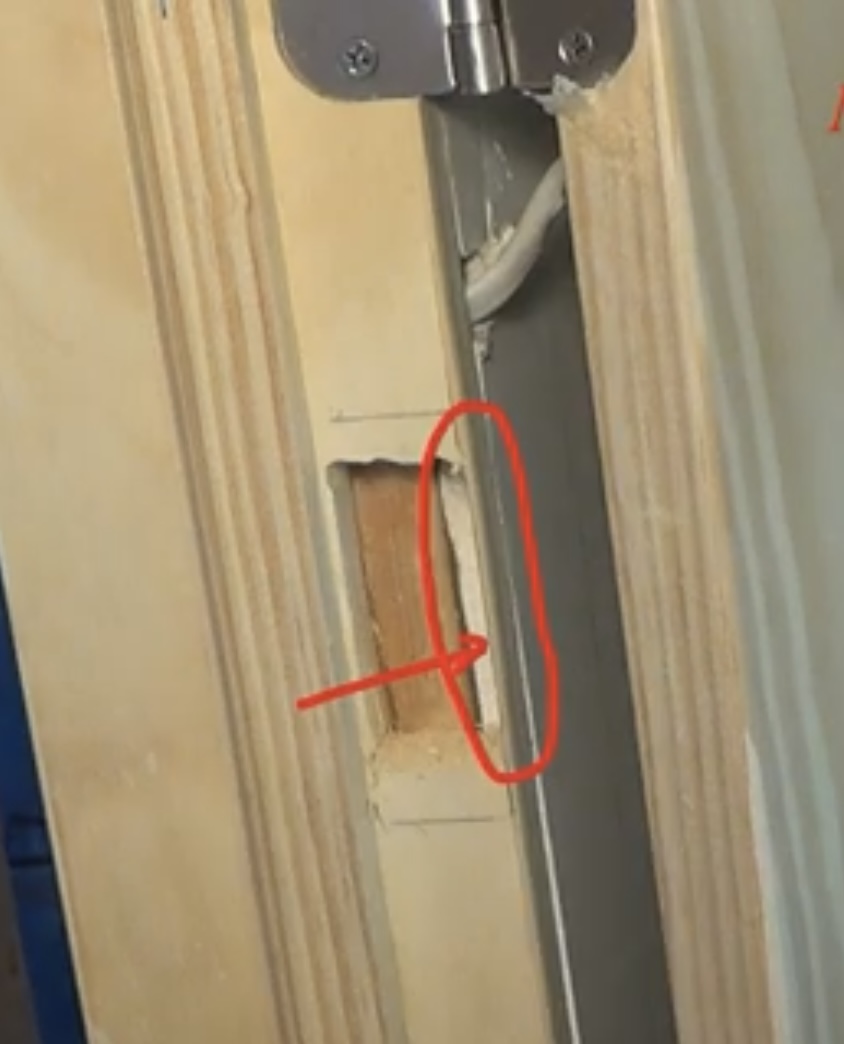I keep splitting the thin wood of the jamb itself when trying to use a chisel because when the needed hole size is correctly cut, the remaining amount of material is like razor thin (<1/4”).
I have a router I’d love to do this with, using a plunge bit, but the depth needed for the box (~1 1/2”) is deeper than the longest 1/4” shank bit I can find. Plus, the part of the door frame that stops the door when closing it, adds an extra 1/4”+ to how for my cutting head needs to reach, extended from that base of the router.
I’ve looked at extension collets for 1/4” routers and the reviews make them sound really unsafe to use.
I have a 1/2” router but I think this setup is too unwieldy to hold it sideways like that (not to mention the size of the 1/2” router’s base being too large, hitting the top of the doorframe.
A buzz saw gives clean plunge cuts in straight lines, but doesn’t hog out material.
I’ve used Forstner bits and spade bits that still bounce around and cause breakage when trying to make holes without enough surrounding material for the indexing parts of the blades to make purchase on.
I really feel like a plunge router yields the cleanest results with the most control for this but I just can’t get it to plunge deep enough.
What do the experienced guys do?
(Edit, for added context) https://youtu.be/d5qQ3P-F0bY
This video shows a guy doing the deed sloppy and carelessly. Also, he is able to cut from the side profile, which makes sense for new work. But I’m trying to do this on existing framing without creating any damage on the outside trim. That’s why I’m trying to plunge from the front instead of the side.
The dimensions of the cut are the size of the electrical box (Height < 2-3/4", Width > 1-1/4", Depth = 1-1/2"). The “plunging” action needs like an additional 1/4” because of the door stopper material that the router base would ride against. So if someone is able to use a router for this task, the bit would need to extend almost 2” from the router base.




